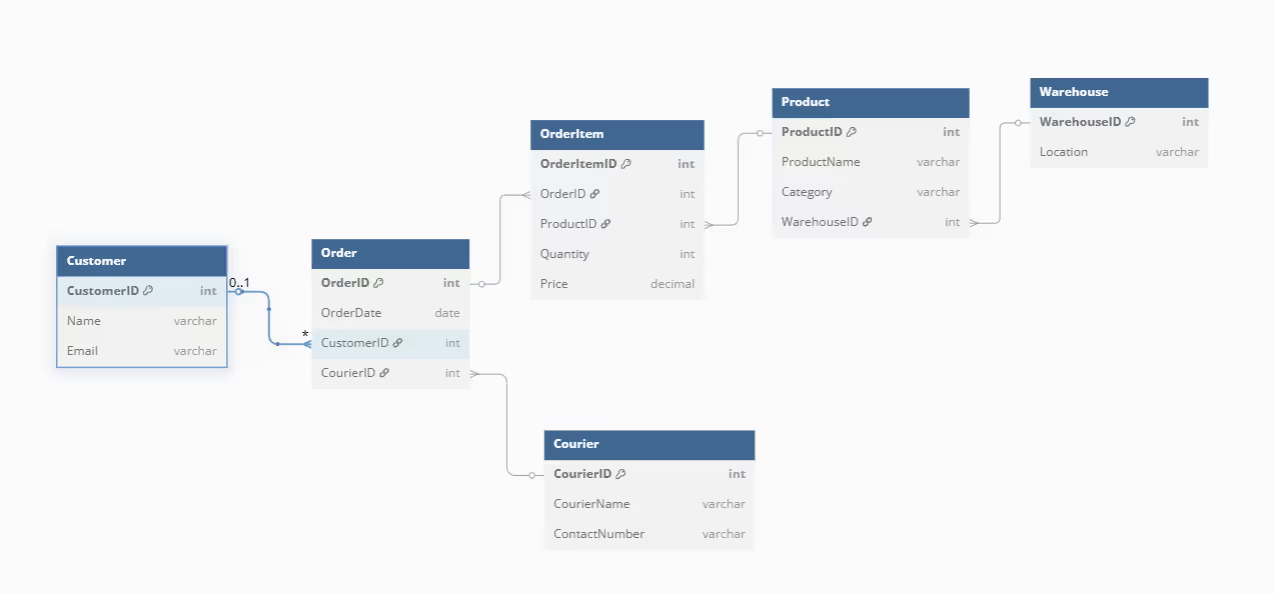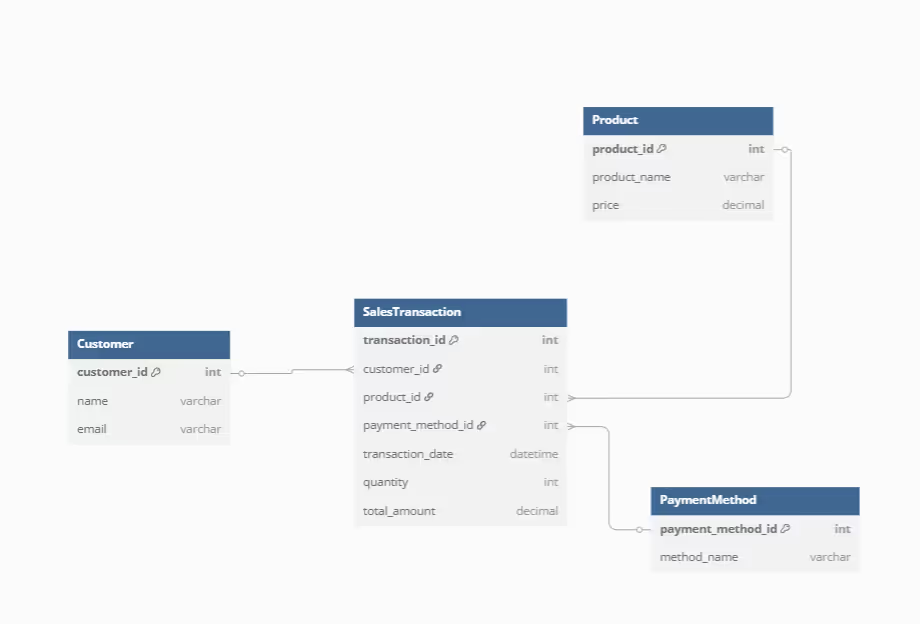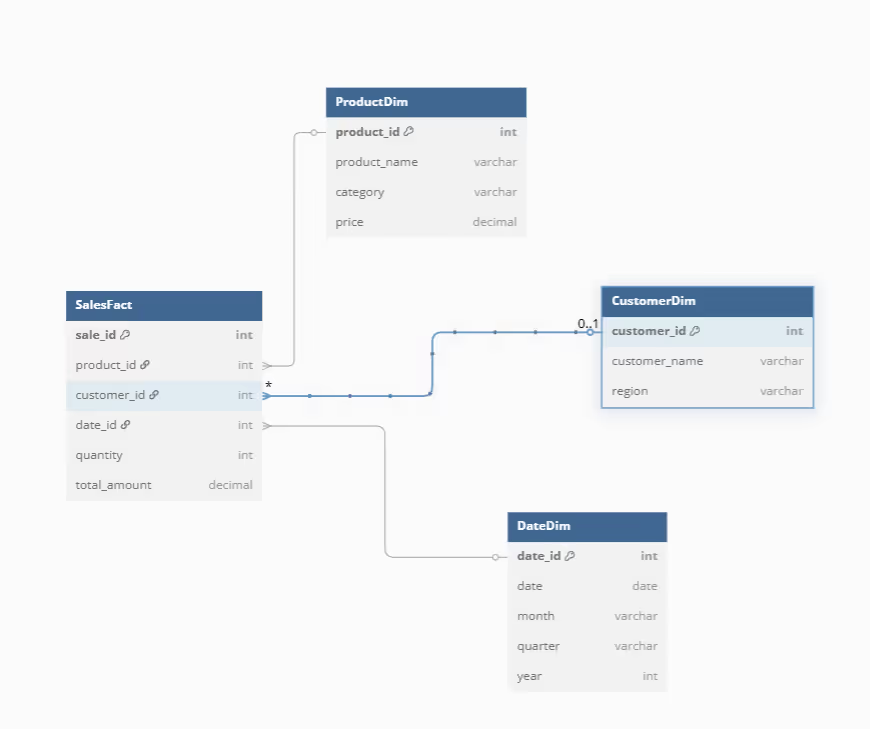Behind every efficient database lies a solid data model, but not all models follow the same structure. Whether you’re building a new system or enhancing an existing one, selecting the right type of model can significantly impact your results. So, how do you know which one to use? Let’s explore the key differences between them.
Using a data modeling tool is crucial for designing and maintaining effective data models. These tools facilitate the creation of visual models and data documentation, helping organizations to manage evolving data structures through iterative and incremental development.

This guide breaks down the types of data models in DBMS, including conceptual, logical, and physical models, with real-world examples to clarify the concepts. You’ll learn what each model does, why it matters, and when to use it, including various data modeling techniques.
A data model is a structured way to organize and define how data storage is managed, connected, and understood. It helps describe the meaning of the data, how it’s related, and the rules it should follow to stay consistent and useful.

Even if a company has a large amount of data, it won’t be helpful unless it’s well-organized and easy to interpret. A good data model ensures the data resources are accurate, meaningful, and ready to support analysis, decision-making, and the use of the right tools.
Additionally, the data modeling process is crucial in data science, as it supports business processes by transforming raw data into structured formats, aligning data management with business operations, and serving as a foundational element in planning IT architecture.

There are three primary types of data models: Conceptual, Logical, and Physical. These are also commonly referred to as different levels of data abstraction, particularly in relational databases. Each type plays a unique role in organizing and representing data structures, relationships, and constraints.
Gathering both business and data requirements early in the data modeling process is crucial. Input from business stakeholders and subject matter experts ensures that the models align with organizational needs and facilitate effective communication among various stakeholders.
Conceptual data models provide a high-level view of data by identifying the key entities, attributes, and relationships. They are technology-independent and focus on an organization's business needs.
Example of Conceptual Data Model:
Let’s say a company wants to build a sales reporting tool to track performance across regions and products. At the conceptual model stage, the goal is to define the key business concepts and their relationships, without delving into technical table structures.
Entities:
Relationships:

This conceptual model provides business stakeholders with a clear understanding of what the reporting tool needs to display, such as total sales by region, top-performing representatives, or customer purchase trends, before any technical implementation begins.
Logical data models provide a detailed overview of the data, without regard for how it will be physically implemented in databases. They include all entities, attributes, and relationships, along with the addition of primary and foreign keys. They also define data types for attributes.
Business analysts play a crucial role in understanding data relationships and requirements, ensuring that they accurately reflect business needs and facilitate effective communication with technical stakeholders.
Example of Logical Data Model:
Imagine an online store that needs to track customer orders, products, and deliveries accurately and efficiently. To organize this data and create useful reports, we utilize a logical data model that defines the primary components of the system and their interconnections.
Entities:
Relationships:

This logical data model helps the e-commerce business organize key information for tracking orders, products, and deliveries.
Physical data models are the most detailed and are tailored to a specific database management system (DBMS). They include all tables, columns, relationships, indexes, triggers, and stored procedures. They specify how data will be stored in a database, taking into account the performance requirements and the specific technology used.
Example of Physical Data Model:
In a physical model, we define exactly how data is stored in the database, including data types, keys, indexes, and constraints. Let’s consider a sales system that requires managing customers, products, orders, and the details of each order.
Entities:
Relationships:

This physical data model prepares the sales system for real-world implementation with performance-focused structure.
💡 Want to see how logical and physical data models actually differ in structure and purpose? Explore our comprehensive guide to discover when to utilize each, how they interconnect, and why both are crucial for successful data projects.
Data modeling encompasses various types, each serving a unique purpose. The primary types include Entity-Relationship (ER) Modeling, Relational data models, Hierarchical data model, Object-oriented data models, and specialized dimensional models.

The Entity-Relationship (ER) Modeling is a graphical representation of entities and their relationships, often utilizing the entity-relationship model in data modeling.
For instance, in a sales transaction, the entities could be the customer, the product sold, and the payment method. The relationships would then define how these entities interact with each other.

This ER diagram clearly maps the interaction between customers, products, and payment methods in a sales transaction. It helps structure the data for smooth tracking, analysis, and reporting.
Relational data modeling are data models that organize data into tables. These tables, or relations, consist of rows and columns where each row represents a record and each column represents an attribute of the data.
In a typical sales system, customers place orders, which typically contain one or more products. These tables are connected through primary and foreign keys to maintain data integrity and support analysis.

This relational model connects customers, orders, and products using foreign keys to reflect real-world transactions.
The Hierarchical data model is a type of data model in which data is organized into a tree-like structure. The model enables data to be stored in a manner that allows for hierarchical retrieval. The hierarchical data model organizes data in a tree-like structure with parent and child records.
For example, in a sales system, a Product Category can have multiple Products, and each Product can appear in multiple Sales Transactions, but for simplicity, we model only the top-down parent-child structure here.

This hierarchical model organizes sales data in a clear top-down structure from category to product to transaction. It supports straightforward reporting and helps identify sales trends across product groups.
Object-oriented data modeling is a type of data modeling that incorporates the principles of object-oriented programming. This model organizes data into objects, which are instances of classes, and these classes and objects can have properties and methods.
In an object-oriented model, data is stored as objects, just like in object-oriented programming. For a sales system, we can model real-world entities, such as Customer, Product, and Order, as classes, with attributes (properties) and links (associations) between them.

This object-oriented model represents customers, products, and orders as distinct entities with defined properties and behaviors. It’s ideal for systems where data and logic need to be closely integrated.
Dimensional data modeling is often used in data warehousing and business intelligence. This model organizes data into two types of tables: fact tables and dimension tables. Fact tables store the data to be analyzed, and dimension tables provide the context for those facts.
In a dimensional data model, we organize data into a fact table, which represents measurable events, and dimension tables, which provide context. For a sales reporting system, the SalesFact table stores transaction-level data, while dimension tables provide details about products, customers, and periods.

This model is optimized for data querying and reporting, making it an excellent choice for complex, multidimensional analysis applications.
The Network Data Modeling organizes data using records and sets, where each record can have multiple parent-child relationships. Unlike hierarchical models, it supports many-to-many relationships, making it suitable for complex systems.
In a sales system, a Customer can be linked to multiple Orders, and each Order can include multiple Products, creating many-to-many relationships between entities.

This network model captures many-to-many relationships across orders and products. It's ideal for sales systems where flexibility and complex associations are key to accurate reporting.
Organizations benefit significantly from data modeling and well-structured data models. These practices help in laying the groundwork for accurate reporting, reliable analysis, and informed decision-making.

Both data models and data modeling techniques significantly improve data understanding by providing a structured and visual representation of data relationships and flow.
A data model provides a clear and organized view of entities, attributes, and the relationships between them, making it easier to understand how data fits into the overall business context.
Data modeling techniques help teams break down complex data environments into understandable layers. These techniques guide the organization, capture, and visualization of information using diagrams and modeling tools.
Data models and data modeling techniques play a critical role in ensuring consistency and integrity across data systems. A well-structured data model and data modeling technique enforce standardized naming conventions, data types, and defined relationships, thereby creating a unified framework for storing and accessing data.
This consistency is crucial in preventing data anomalies and conflicts, which can lead to inaccurate data interpretation and decision-making. Furthermore, it ensures that data integrity is maintained during transactions, updates, and other data operations, enhancing overall data quality.
Data models and modeling techniques provide a blueprint for efficient database design. They help define tables, relationships, keys, and constraints, ensuring databases are structured, scalable, and optimized.
Techniques such as normalization and schema design facilitate the identification of redundant or missing data. This results in databases that are easier to manage, perform better, and support long-term growth with minimal data inconsistencies.
Accurate reporting relies on both data models and data modeling techniques. A well-structured data model defines how data is organized, making queries and report generation more reliable.
Techniques such as dimensional and entity-relationship (ER) modeling ensure that data is grouped and related correctly for analytical purposes. Together, they provide consistent insights, minimize reporting errors, and facilitate informed decision-making across business functions.
Data modeling has real-world applications in various sectors. Personal cloud storage services utilize data modeling to synchronize data across devices, enabling users to access their data anytime, anywhere.
Social media platforms utilize data modeling to store vast amounts of user data, which is then used to recommend friends, topics, and products to users.
Various data models serve different but essential purposes in data management, highlighting the distinction between types such as conceptual, logical, and physical models.
In the healthcare sector, data modeling plays a vital role in efficiently managing patient data. By creating data models, healthcare providers can structure and organize patient information, including medical history, diagnoses, treatments, and laboratory results.
Data modeling techniques are essential tools for transforming data into valuable business insights, enabling stakeholders to understand and effectively evaluate data processing and storage.
These models help standardize data formats and relationships, ensuring consistency and accuracy across different systems and healthcare facilities. With well-designed data models, healthcare professionals can easily access and analyze patient data, leading to improved decision-making, diagnosis, and treatment planning.

Data modeling is extensively used in the finance industry to track transactions and assess risks. Financial institutions utilize data models to capture and store transactional data from various sources, including banking systems, payment gateways, and stock exchanges. These models define the relationships between financial entities, including customers, accounts, transactions, and assets.
Financial organizations can identify patterns, detect fraud, monitor market trends, and assess risk exposure by analyzing the data stored in these models. Data modeling enables accurate and timely reporting, regulatory compliance, and effective risk management strategies.

In the e-commerce sector, data modeling plays a vital role in understanding customer behavior and delivering customized marketing experiences.
It is also crucial to manage enterprise data within various cloud architectures to ensure efficient data handling and operational efficiency.
By capturing and analyzing customer data, including browsing history, purchase patterns, demographic information, and preferences, e-commerce companies can create data models representing the relationships between customers, products, and their attributes.
While data models and modeling techniques bring structure and clarity to data, they also present a few challenges that teams should be aware of.
💡 Avoid common pitfalls that can derail your data projects. Check out our guide on mistakes in data modeling to learn how to spot and fix issues before they impact your analysis, reporting, or scalability.
Accurately representing complex relationships in data models is crucial for enhancing data organization and querying capabilities across different database types.
From organizing complex data relationships to ensuring accuracy and consistency, OWOX empowers businesses to integrate diverse data sources and scale as their needs evolve. Don’t miss the opportunity to supercharge your data analysis and drive your business forward! Ready to take the next step? Book a demo of OWOX Data Marts today.

Data modeling visually represents data structures and relationships, facilitating understanding and communication about data requirements. It aids in designing efficient databases, ensuring data consistency and integrity, and enabling accurate reporting and analysis. Data modeling is a crucial step in database design and data management.

Data modeling tools are software applications that create, maintain, and manipulate data models. These tools provide a graphical interface to visualize and manage data structures and relationships. They assist in designing databases, enforcing data integrity, generating SQL scripts, and documenting data models, thereby streamlining the data modeling process.